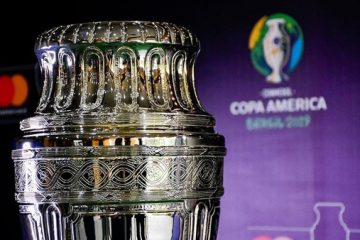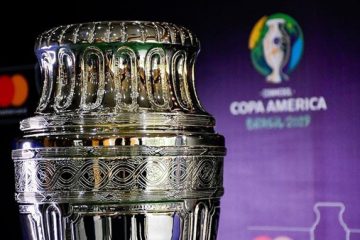With two weeks to go to the finals of the soccer World Cup in Brazil, small German start-up company GoalControl has the technology ready make the calls cheered and challenged around the globe: goal or no goal. This year’s World Cup will be the first when ‘goal-line technology’ will be used, years after the concept was introduced to sports such as cricket, rugby and tennis.
The system, which costs 100,000-170,000 euros ($136,000-$2 31,200) a year, makes use of 14 cameras. They send digitalised pictures to a data room, sitting in the top of the soccer stadium. After analysing the data, the message will be sent to a special watch, worn by the referee with the word “GOAL” if the balls is over the line. The process takes less than a second.
“Clearly, the world cup is very important to us. We hope to convince some sceptics about the technology,” said Dirk Broichhausen, managing director and co-founder of GoalControl.
At the moment the company makes less than 10 million euros in annual revenues. But it estimates it is tapping into a market of about 100 million euros.
“The game is changing rapidly and we are looking at other sports which can use our technology,” Broichhausen said at the Tivoli soccer stadium, which has has the system installed.
FIFA was persuaded to move to technology after an incident in the 2010 World Cup when England’s Frank Lampard was denied a goal against Germany when his shot hit the bar and officials failed to spot it had bounced down just behind the line. That would have tied the match at 2-2 but Germany went on to win 4-1.
The incident had echoes of a famous incident in 1966 when England beat West Germany 4-2 in the final at Wembley, helped by a similar disputed goal that was given to the English on this occasion.
Germans sometimes use the phrase “Wembleytor” to refer to such incidents when the eye struggles to see whether the ball has crossed the line.
It was a similar incident five years ago, during the German second soccer division game between Munich 1860 and Kaiserslautern, that prompted Broichhausen to wonder whether software could recognise the ball and make the call. It could.
BACK IN SPOTLIGHT
Earlier this month the technology moved back into the spotlight after the German cup final between Bayern Munich and Borussia Dortmund, only weeks after the German clubs had rejected the technology.
Dortmund were confident they had scored against champions Bayern when Mats Hummels headed into goal in the 64th minute and defender Dante cleared the ball near the line with the score at 0-0.
Television replays showed both Dante’s leg and the ball were clearly over the line. Instead it was Bayern who struck twice in extra time to lift the trophy and complete the domestic double.
GoalControl is looking at other applications. The software can help to establish whether a player was offside or not.
The English Premier League adopted goal-line technology this past season when it started using a system supplied by Hawk-Eye, a British-based company owned by Sony.
The 36 German clubs from the first and second soccer division rejected the introduction of the technology in March because of the technology’s cost.
Earlier in the season Bayer Leverkusen’s Stefan Kiessling scored a ‘phantom goal’ against Hoffenheim when the ball went in through the side netting.
Bayern Munich last week asked for introduction of the technology just for the Bundesliga after Germany’s football league (DFL) had said would review the matter if a club filed another request.
Broichhausen is convinced the world’s most popular game is on the verge of big changes. “We are making history. The soccer fans want this technology. They don’t want to debate after a game whether it was a goal or not. They just want to know.”
-With smh.com.au input




















